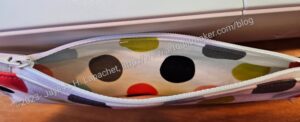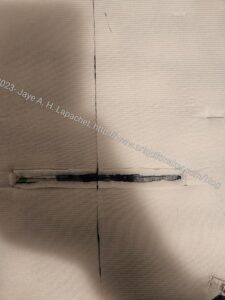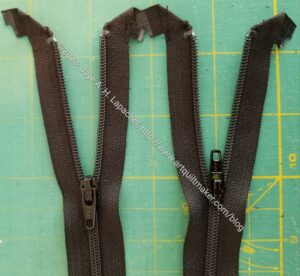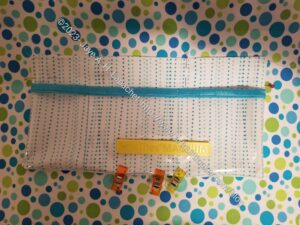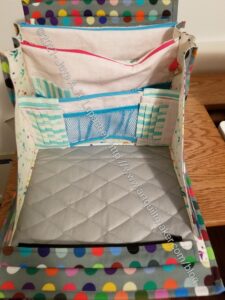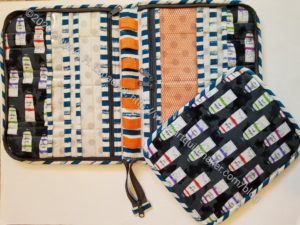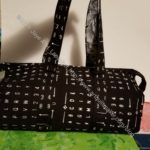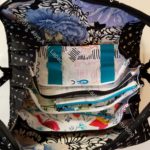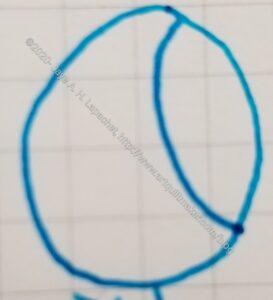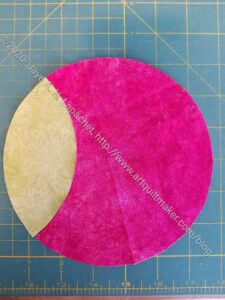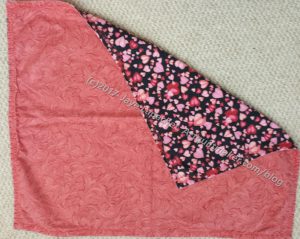I am going through my bookshelves as I prepare to remove everything from my workroom and paint. That project is a story for another day, but the bottom-line is that I cannot stand the life sucking beige anymore and it has to go. In order for it to go, I have move all of my stuff — all of THE stuff out of my workroom.
When I come across certain things, like magazines, I look through them to try and see if I want to devote part of my new, fresh space to them. I am pretty good about marking pages when i initially read a magazine. This makes looking through the issues much easier, though i do tend to want to see what else is in the content. I did mark up a 2014 issue of Fresh Quilts**. I don’t know if this magazine is still published. This particular issue has an interesting essay on wabi sabi by Riane Menardi. Not so interesting that it is going to live in my new workroom, the essay is making me think.
The definition of wabi sabi in the article “an old Japanese philosophy that asks us to find beauty in the imperfect. It us that in life, nothing is perfect, permanent, or complete. Wabi sabi asks us to embrace all the natural states of being – the cycle of creation, growth, and decline, and everything in between.”
I also checked Wikipedia (yes, I looked at the references and this article was well documented) and the definition there is “wabi-sabi (??) is a world view centered on the acceptance of transience and imperfection.[2] The aesthetic is sometimes described as one of appreciating beauty that is “imperfect, impermanent, and incomplete” in nature.[3] It is a concept derived from the Buddhist teaching of the three marks of existence (???, sanb?in), specifically impermanence (??, muj?), suffering (?, ku) and emptiness or absence of self-nature (?, k?). Characteristics of wabi-sabi aesthetics and principles include asymmetry, roughness, simplicity, economy, austerity, modesty, intimacy, and the appreciation of both natural objects and the forces of nature.”
Slight difference, I think, but I can see the relationships.
From a here and now in the world perspective, I know that nothing is permanent. I am sitting at home for the 5 millionth day in a row unable to see my friends or my family. From a quilt perspective, I think things are less clear.
I went shopping inside a quilt store the other day – for the first time in over a year. There they had some fabrics I thought I would never be able to get again. While this was surely an anomaly, it was a welcome anomaly. In my mind this means that while nothing is permanent, sometimes the train of impermanence hurtling toward you is delayed. In quiltmaking, we can get fabrics with the same colors, so the idea in a quilt design can be continued even if the fabric is different.
I worry about the ‘nothing is perfect’ aspect of wabi sabi with regards to quiltmaking. Nothing is perfect, but I strive for excellent workmanship and technique. I want as few mistakes as possible in my quilts. When I do make a mistake, I contemplate it for a bit and decide if I can live with it. If so, I move on. If not, I rip it out and do it over. What worries me is people putting in an obvious mistake in a quilt because ‘nothing is perfect’ or ‘only God is perfect.’ This was a real phenomenon in quiltmaking in the 1990s and kind of outraged me. In my mind, there is no way I can make an absolutely perfect quilt – one with no mistakes. I don’t need to put in a mistake since there will always be mistakes no matter how careful I am. There will always be more than one mistake in every quilt I make whether the viewer can see it or not. Why would you intentionally put a mistake in your quilt?
The author says to embrace mistakes and make them part of the design. I often do this, especially if I run out of fabric. I pick another fabric with a similar color and move forward. The bonus of this technique is that I have developed a style where I use many, many fabrics rather than just one, especially where fabrics of the same color can make the area of a quilt more interesting. If a mistake will ruin my overall design idea, then I don’t go in a different direction. I fix it. In my work, I need to complete the idea in my head or it won’t leave me alone. I suppose it depends on the idea. If I am just playing, then unexpected directions can be a useful tool. Often, though, I have a design in mind that I want to explore and those feelings can be compulsive.
Ms. Menardi also talks about destruction. She says to ‘destroy something’ or ’embrace destruction.’ I was in an improv exchange once where one member sliced and diced everyone’s piece to shreds and then sewed them back together. The results were awful. Mine escaped this fate somehow. I think she came up with the idea after she worked on my piece. I was glad, because the resulting compositions of the other pieces were destroyed. Not in a good way either. Every choice in my work needs to have a reason and needs to make it a better piece. Even with my Color Improv donation quilts, I make choices in where I place the fabrics. I might be using looser rules than when I make other quilts, but I still make choices that better the overall design. I don’t believe in destruction for destruction’s sake.
The final suggestion was ‘love (and use) your quilts.’ This is important to me. With very few exceptions, I don’t give people quilts for them to end up in a cupboard ‘for good.’ I want baby quilts to be dragged around and used to death. I want my nieces and nephews to wrap up in their quilts for comfort until the binding frays and worn areas appear. The bottom-line? There is always more fabric.
I do embrace the beauty of handmade items and recognize that those items have mistakes. The mistakes are not important; the beauty of the visual design and the love that went into the hours of sewing is what is important to me.
**I use affiliate links and may be paid for your purchase of an item when you click on an item link in my post. There is no additional cost to you for clicking or purchasing items I recommend. I appreciate your clicks and purchases as it helps support this blog.

